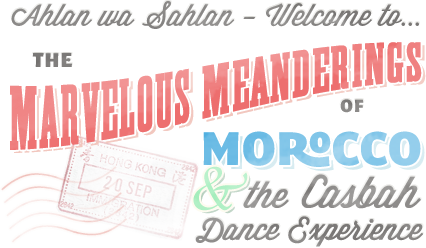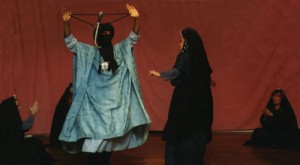Sad to say, to date, there’s no book on the “origins” of Oriental dance I can recommend as factual or required reading. Most are the writer’s personal biases & fantasies. Some have lots of great pix &/or “borrowing”: worth having for that alone or for their divergence of opinion on our beloved subject.
However, there are many valid, highly informative books about culture, history, politics, etc. that put many things in context / perspective & help foster greater understanding of those cultures & areas from which Raks Sharki comes.
I’ve read & appreciated these books (& many, many others) & get no compensation for listing them other than helping to spread truth & understanding.
- “A Trade Like Any Other” by Karin van Nieuwkerk: excellent analysis of the real life & social position of the dancers of Cairo’s Mohamed Ali Street, based on her personal acquaintances & extensive interviews. The history of Cairo’s dance “scene” in the foreword is mostly accurate & the book would be worth it for that alone.
- “An Hour for God and an Hour for the Heart”: Islam, Gender and Female Entertainment in Egypt – Karin Van Nieuwkerk’s extremely important follow-up article to “A Trade Like Any Other”…
- Middle Eastern Muslim Women Speak: edited by Elizabeth Warnock Fernea & Basima Bezirgan – an anthology drawn from many sources & countries that is an excellent overview of real lives of women in the Near & Middle East. You can’t go wrong with any book by Fernea.
- “Veiled Half Truths (Western Traveller’s Perceptions of Middle Eastern Women) by Judy Mabro” – A fabulous overview, using extensive quotes / examples, of how prevailing colonialist & racist attitudes of 18th & 19th century Western travellers to the Near/ Middle East & North Africa highly colored & distorted their experiences & subsequent writings – accounts from which we get so much of our current misinformation & Orientalist fantasies.
- “The Hidden Face of Eve” by Nawal el Saadawi: Egypt’s leading radical feminist writes about her real life, from her midnight circumcision on the bathroom floor (when she was 4 years old) to more recent struggles with the all -pervasive cultural misogyny that landed her in prison more than once & led, recently, to a “fundamentalist” fatwa calling for her assassination & necessity of political exile to the U.S.
- “Woman at Point Zero” by Nawal el Sadaawi: Dr. El Saadawi writes the story of a real, condemned woman prisoner she met, who was convicted for killing the man who tried to force her to accept him as her pimp, the life that woman was forced to lead – mostly the result of living within the cultural misogyny that has also led to Dr. Saadawi’s political problems with the “fundamentalist” mindset. FYI – she won the lawsuits against the fundamentalists, who were trying to force Nawal’s husband into an involuntary divorce & against the Cairo newspaper that so misrepresented what she said in an interview, it lead to the fatwa against her & the attempt to force the divorce.
- “Price of Honor: Muslim Women Lift the Veil of Secrecy on the Islamic World” by Jan Goodwin: current accounts of the terrible price women are paying for the rise in so-called “fundamentalism”. A must read & important “reality check”.
- “Khul-Khaal: Five Egyptian Women Tell Their Stories” by Nayra Atiya: exactly what it says & it does so eloquently & vividly, in their own words. Another moving reality check.
- “The Veil & the Male Elite” (titled “Women In Islam” in England) by Fatima Mernissi: like Elizabeth Fernea, you can’t go wrong with any book by Mernissi. A historical overview of the life & times of the Prophet Mohamed (PUH) & the very real importance of the women in his life.
- “Beyond the Veil: a Male/Female Dynamic in Modern Muslim Society” by Fatima Mernissi: An excellent analysis, in response to what she saw as the total illogic of exisitng all – pervasive sexism in her country / society (Morocco) & its crippling effects on men as much as on women in their relationships & dealings with one another.
- “The Forgotten Queens of Islam” by Fatima Mernissi: written in response to the total uproar in the Islamic world (by men) after the election of Benazir Bhutto to head the government of Pakistan.
- “Guests of the Sheik” by Elizabeth Warnock Fernea: her first book, about two years spent with & within women’s culture in a small village in Iraq. Worth it just for the description of that village sheik’s reaction to seeing a Western man dance with his wife in a Baghdad restaurant, let alone what happened when she & one of the local women accepted a ride with the woman’s cousin . . .
- “A Street in Marrakesh” by Elizabeth W. Fernea: about her time in Morocco . . .
- “View from the Nile” by Elizabeth W. Fernea: living in Egypt . . .
- “The Arab World: Personal Encounters” by Elizabeth W. Fernea: she revisits the places she lived (Iraq, Morocco, Egypt), reporting on changes & the situation in Palestinian camps.
- “Nubian Ceremonial Life” by John Kennedy (no relation): good study, including details on “pharaonic” female circumcision practises *&* the importance & place of communal dancing in Nubian culture at the time it was written.
- “The House of Obedience:Women in Arab Society” by Juliette Minces: Islamic “Sharia” (Legal Code) in relation to women.
- “An Account of the Manners & Customs of the Modern Egyptians” by Edward William Lane (first published 1832). Excellent descriptions & drawings (photography had yet to be invented), but bear in mind that Lane was mainly there as a spy for the British Crown . . .
- “Shahhat, an Egyptian” by Richard Critchfield: about the author’s friendship with a young Saidi (Upper Egyptian) man & his everyday life.
- “Harem Years: the Memoirs of an Egyptian Feminist” by Hoda el Shaarawi (translated by Margot Badran): life & times of a woman of Ottoman Egypt’s ruling class during the 1st half of the 20th century, who saw the necessity of using her status to help all women in Egypt. Upon returning from a women’s conference in Italy, she was the first to publicly remove her veil & cast it in the Nile. She also started Egypt’s Women’s Union. (Things seem to be moving backwards at breakneck speed since 1980!)
- “Looking For Little Egypt” by Donna Carlton: very well researched & written. She clears up a lot of myths & half-truths.
- “Valide” by Barbara Chase-Riboud: well-researched novel about the life of Aimee Dubuc de Rivery, cousin of Josephine Bonaparte, who was captured by Barbary (Berber!) pirates on her way back to Martinique from convent school in France. She was presented as a gift to the Ottoman Pasha in Istanbul, renamed Nakshidil & rose to the highest position a woman could attain there: Valide Sultana – mother of the Pasha, head of the Grand Harem of Topkapi Serai – the world’s most luxurious prison.
- “Sultana” by Prince Michael of Greece (honest!): another view of the story of Nakshidil.
- “At the Drop of a Veil” by Marion Alireza: as a young American college student, she married a very well-placed young Saudi & went back to live with him in Saudi Arabia, at the very start of petro power & before modernization.
- “The Saudis” by Sandra Mackey: a journalist for the Christian Science Monitor, she had to smuggle the notes for this book out.
- “Beyond the Veil” by Seymour Gray, M.D.: no relation to the Mernissi book of the same name, this one relates the experiences of a doctor in Saudi Arabia.
- “Veils and Daggers” by Linda Steet: a documented expose of the real purpose behind National Geographic magazine.
- “40 Days & 1001 Nights “ by Tamalyn Dallal: relates the wonderful, revealing experiences of an intrepid dancer/journalist in 5 different Muslim areas. Truth rather than fear-mongering myths.
- “The Imperial Harem of the Sultans: Daily Life at the Ciragan Palace during the 19th Century”, Memoirs of Leyla (Saz) Hanimefendi, first translated and published in 1925. ISBN 975-7638-19-5 Istanbul: Peva Publications, 1994. Madame Hanimefendi was raised in the Grand Harem and married the Grand Vizier. It is very different from the sensationalist, sex-filled fantasies and you will find the descriptions of the real dances very interesting.
- “The Concubine, the Princess and the Teacher” translated and edited by Douglas Scott Brookes: accounts of what life was really like in the Ottoman Sultan’s harem, by 3 women who lived there. A great companion to Leyla Saz Hanimefendi’s book
- “The Myth of Sacred Prostitution in Antiquity” by Stephanie Budin: so much for the “dance of the sacred prostitute”. Like National Geographic’s early issues, Herodotus had an agenda …

